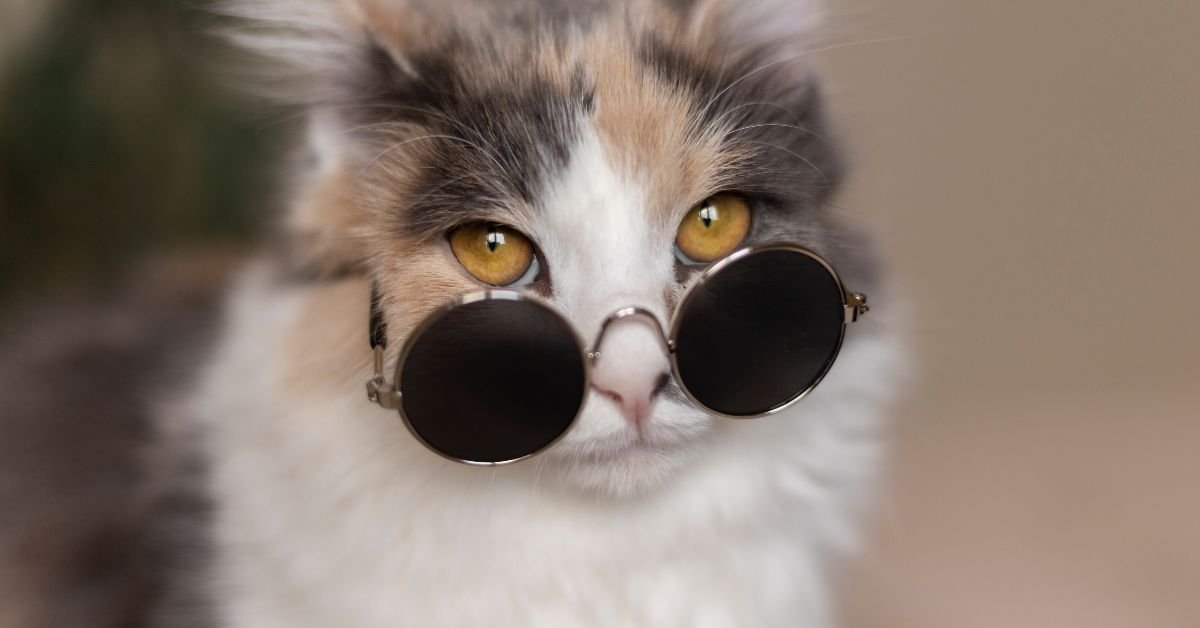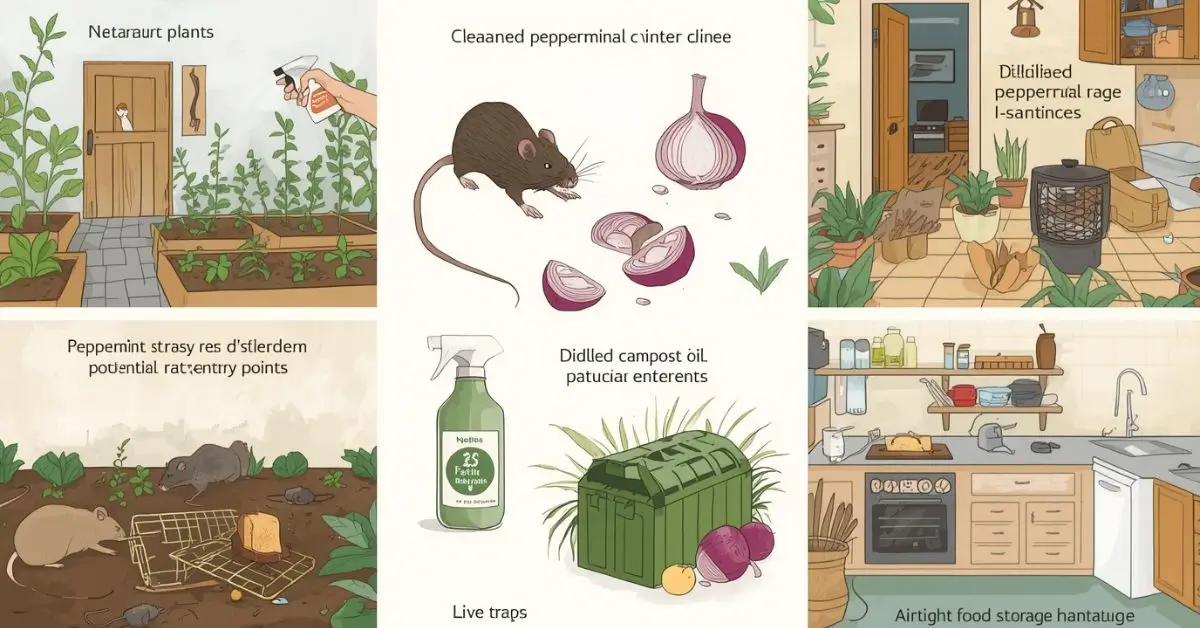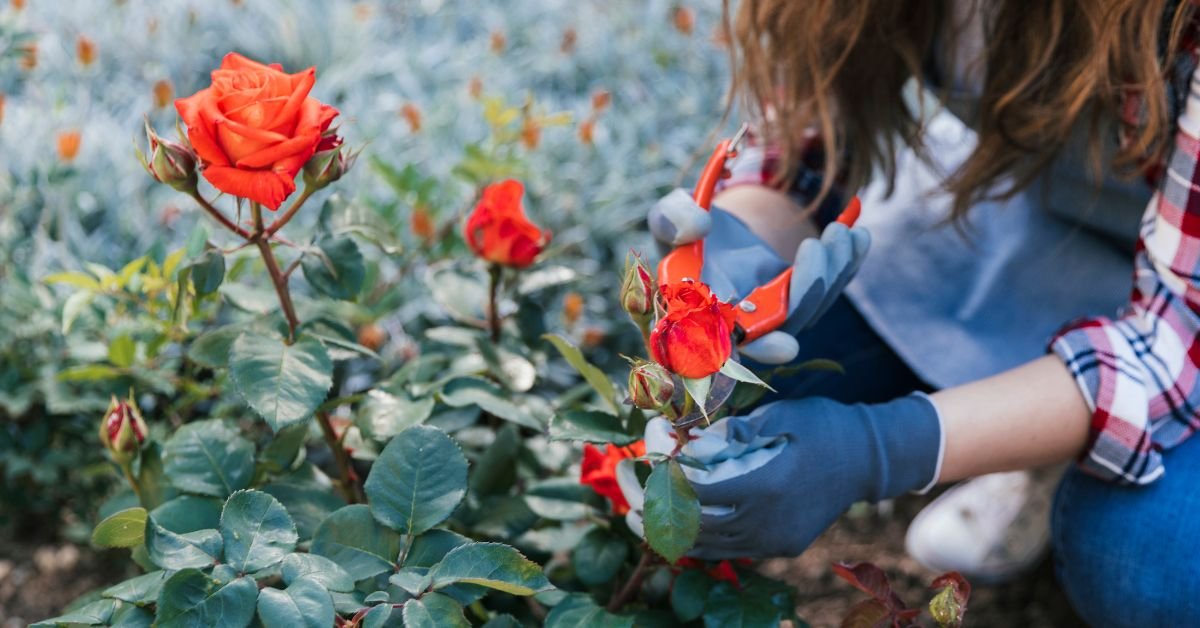ENVIRONMENT
Whisker Wars: The Couch Is Mine!

Whisker Wars: The Couch Is Mine!. From curious kitten antics to savvy domestic cat maneuvers, every whisker twitch is a potential viral moment, a slice of pet comedy that delights audiences on YouTube and meme culture fans everywhere.
The Appeal of Cat Humor and Feline Behavior
Cat humor has won hearts worldwide thanks to spontaneous antics and expressive behavior. Domestic cats excel in delivering comedic timing with every slip, pounce, or sudden leap—often when least expected. Their playful behavior taps into a universal amusement with feline curiosity, whether they’re snoozing in the sunbeam or engaging in a fierce showdown with a plush toy on your sofa.
When a cat pounces on a cushion only to bounce off, or flops dramatically while lounging, that blend of surprise and physical comedy creates shareable content. Such moments often go viral, and you’ll find them featured heavily in pet comedy compilations across social platforms.
Behind the Scenes: How Cats Claim Territory
Kitten Antics and Territorial Instinct
Even as kittens, cats display territorial instincts. When your cat leaps onto the couch and sits right in the center, it’s more than fluff—it’s feline psychology at work. That behavior is rooted in both instinctual territory marking and a desire for comfort. And once claimed, no moving again unless it’s to demand belly rubs.
Body Language That Tells a Story
The silent dialogue of cat body language says it all in these whisker wars. An assertive tail flick, eyes narrowed into almond shapes, or a slow blink is all part of the negotiation. These cues paired with physical antics—like sliding across a leather couch with paws extended—deliver nonverbal commentary that both cat owners and animal behavior enthusiasts admire.
Creating Your Own Viral Cat Video
Capturing Silly Feline Moments
To film funny cat scenes that resonate—you don’t need Hollywood gear. A smartphone, natural lighting, and quick reflexes are enough. Begin by keeping your camera ready near favorite lounging spots. Most humorous behavior emerges when a curious cat investigates a new object or challenges a plush rival. Timing is key.
Editing for Maximum Impact
Simple editing lifts playful footage into viral-ready content. Splice clips so the funniest moments appear early. Add light sound effects when your cat leaps or thumps. Captions with a comedic touch—like “Who gave permission?” when the cat flops dramatically—enhance viewer delight. The pacing and comedic framing mirror strategies seen in successful meme culture and viral pet compilations on YouTube.
Sharing and Spreading the Fun
Platforms to Showcase Pet Comedy
If you want your clip to go viral, post it on platforms like TikTok, Instagram Reels, YouTube Shorts, or cat-centric meme forums. Tag it with keywords such as “cat meme”, “funny feline moments”, or “viral cat video” to increase reach. Audiences searching for stress relief or light entertainment are always eager for adorable cat antics.
Engaging with Your Audience
Once your video is live, encourage viewers to comment on what made them laugh most. Comments like “That slow-motion jump was epic!” or “I needed this laugh today, thank you!” foster engagement. And interacting—responding with gratitude or cheeky replies—helps boost algorithmic visibility.
The Psychology of Funny Cats and Stress Relief
Staring at a peaceful cat video can release endorphins and reduce cortisol—the stress hormone. That’s why so many viewers turn to cat humor after a long day. The combination of soft purring, fluffy fur, and carefree antics taps into our innate affection for domestic pets. Whether it’s a kitten chasing a laser dot or an adult cat knocking over a blanket, these everyday scenes deliver genuine mood lifts.
Meme Culture and Shared Laughter
How Cat Memes Spread
Within meme culture, funny cat images and short clips proliferate rapidly. A still frame of a surprised feline face or a GIF of a couch takeover becomes a meme template, reused and remixed across different languages and platforms. The humor is universal, and that’s why ordinary cat antics become shared creative currency.
From Meme to Movement
When a scene—like a cat planting itself over cushions—resonates visually, people caption and circulate it widely. That’s how a quiet household moment transforms into a meme that appears in Facebook groups, Twitter threads, and Reddit communities. Accounts dedicated to pet comedy help amplify these images, sparking laughter around the globe.
Pet Care Considerations During the Whisker Wars
While recording or encouraging those theatrical couch takeovers, never forget cat welfare. Ensure your pet isn’t stressed or pushed into dangerous zones. Provide a comfy scratching post, toys to imitate chasing behavior, and soft perches to encourage safe exploration. Balanced nutrition and gentle attention feed both their health and comedic potential—happy cats behave playfully.
DIY Home Setup for Best Viewing
Comfortable Viewing Spaces
Set up couch zones with soft throws, pillows, or cat tunnels. These areas invite feline games and provide visual contrast for your camera. Bonus: a patterned throw can amplify the comedic effect when your kitty bursts into unexpected action.
Tools to Capture Funny Antics
A camera with stabilization helps avoid shaky clips. Use a ring light or position near a window for steady natural light. A simple tripod lets you film hands-free while your cat improvises the rest. And don’t forget the sound: subtle ambient audio can enrich the mood, especially when your pet purrs or flops dramatically.
FAQs
Q: How can I film funny cat moments without startling my pet?
A: Keep your presence calm and non-intrusive. Use quiet camera settings and let your cat move at its own pace. Reward behaviors it enjoys with treats, so recording becomes part of its routine.
Q: Why do cats flip on their backs when lounging on furniture?
A: Rolling onto the back exposes their belly, a vulnerable area offered only when they feel safe and trusting. It’s also a comfy stretch. When paired with playful behavior, it creates comedic footage.
Q: What are the best platforms for sharing short funny videos?
A: TikTok, Instagram Reels, YouTube Shorts, and dedicated meme pages on Reddit are top picks. Use descriptive tags and captions to reach audiences looking for feline humor and viral content.
Q: Can watching funny cat content actually reduce stress?
A: Yes—studies and viewer reports show that watching lighthearted pet videos can lower stress levels, increase endorphins, and uplift mood. Pet comedy often offers moments of pure joy and calm.
Q: Are there legal issues when sharing cat videos online?
A: As long as the content is your own—or you have permission to post clips involving other pets—you’re generally in the clear. Avoid copyrighted music or footage unless you’ve licensed it or used royalty‑free tracks.
Conclusion
Whisker Wars: The Couch Is Mine! captures the joyful essence of feline humor, blending everyday cat antics with viral potential. From territorial postures to soft belly-rolls, playful leaps, and meme-ready expressions, these moments showcase cats at their most entertaining. By filming thoughtfully, editing cleverly, and sharing on the right platforms, you can transform ordinary living room antics into charming content that spreads smiles
BLOG
What Deters Rats: Top Natural Methods for Your Home

Rats are more than just a nuisance—they can damage property, spread diseases, and threaten the safety of pets, gardens, and businesses. Whether you’re a homeowner, gardener, pet owner, restaurant manager, eco-conscious DIYer, or pest control professional, knowing what deters rats is crucial. In this guide, we’ll explore natural and effective methods to keep rats at bay safely and humanely.
Why Understanding Rat Behavior Matters
Before diving into deterrents, it’s important to understand why rats invade homes and gardens:
- Rats are nocturnal creatures attracted to food, warmth, and shelter.
- They have highly sensitive noses, meaning smells can either attract or repel them.
- Rats are resourceful and adaptable, so combining multiple prevention methods is most effective.
Knowing these behaviors ensures your efforts in rat prevention are strategic and long-lasting.
Natural Rat Deterrents
For homeowners, gardeners, and eco-conscious consumers, natural approaches are often the safest.
Smells That Repel Rats
Certain scents can keep rats away naturally:
- Peppermint oil – strong, pungent smell masks food odors and irritates rats’ sense of smell.
- Cloves and cayenne pepper – act as a natural irritant when sprinkled around entry points.
- Ammonia – mimics predator urine and deters rats.
Expert Reference: According to the University of California Agriculture & Natural Resources, peppermint oil can reduce rodent activity when applied consistently around homes and gardens.
Plants That Deter Rats
Some plants naturally discourage rats:
| Plant | How It Works |
|---|---|
| Peppermint | Strong scent masks edible smells |
| Garlic | Pungent aroma irritates rodents |
| Daffodils | Toxic to rats if ingested |
| Marigolds | Strong scent repels small pests |
Planting these around your garden or home perimeter can create a natural rat barrier.
Humane Ways to Deter Rats
For pet owners and eco-conscious individuals, humane methods are preferred:
- Seal entry points: Inspect basements, attics, and walls for holes larger than 0.5 inches.
- Ultrasonic rat repellent: Devices emit high-frequency sounds undetectable to humans but annoying to rats.
Expert Reference: The Pest Management Professional Journal notes that ultrasonic devices are more effective when combined with sanitation and exclusion methods.
- Live traps: Capture rats safely and release them far from residential areas.
- Maintain cleanliness: Eliminate food scraps, secure garbage bins, and remove clutter to reduce nesting opportunities.
Home Remedies for Rats
If you prefer DIY solutions, these methods are effective:
- Peppermint oil-soaked cotton balls placed in corners and behind appliances.
- Hot pepper water spray around garden beds and compost piles.
- Baking soda in food sources (careful with pets) – can disrupt digestion of rodents.
NLP Integration: “Does peppermint oil keep rats away?” Yes, studies show it acts as a strong deterrent when applied frequently.
How to Keep Rats Away in Different Environments
Gardens and Farms
- Secure compost with rat-proof bins.
- Use natural rat deterrents like peppermint plants or cayenne pepper around crops.
- Cover seeds and feed for birds and livestock.
NLP Integration: “How to deter rats from the garden safely” – Sprinkle natural repellents, use barriers, and maintain a clean environment.
Homes and Apartments
- Seal walls, vents, and attic entries.
- Set up ultrasonic devices near problem areas.
- Store food in airtight containers.
NLP Integration: “What deters rats in walls and attic?” – Sealing entry points, ultrasonic repellent devices, and regular cleaning are most effective.
Restaurants & Food Businesses
- Regular waste disposal and cleaning schedules.
- Use natural or ultrasonic deterrents near storage areas.
- Educate staff on rat prevention measures.
Best Rat Repellents: A Comparison
| Method | Pros | Cons | Ideal For |
|---|---|---|---|
| Peppermint oil | Safe for humans & pets, easy to apply | Needs frequent reapplication | Homes, gardens |
| Ultrasonic devices | Non-toxic, humane | Mixed effectiveness | Homes, businesses |
| Live traps | Humane, reusable | Requires monitoring | Pet owners, eco-conscious |
| Cloves & cayenne pepper | Natural, inexpensive | Needs regular replacement | Gardens, patios |
| Sealing & exclusion | Long-term solution | Labor-intensive | All environments |
Tip: Combining smells, plants, and structural prevention is the most effective strategy.
Essential Tips for Long-Term Rat Prevention
- Keep yards clean and free of clutter.
- Store grains, pet food, and trash in sealed containers.
- Regularly inspect attics, basements, and walls for signs of rats.
- Rotate deterrents to prevent rats from adapting.
NLP Integration: “How to prevent rats from coming inside?” – Maintain sanitation, seal entry points, and use natural repellents consistently.
FAQ’s
What smell do rats hate the most?
Rats dislike strong scents like peppermint, cloves, cayenne pepper, and ammonia. Peppermint oil is particularly effective indoors.
Can ultrasonic devices really deter rats?
Yes, they can be effective, especially when combined with sanitation and exclusion methods, though results may vary depending on placement and environment.
How to deter rats naturally without poison?
Use peppermint oil, hot pepper sprays, natural plants, live traps, and sealing entry points.
What home remedies work against rats?
Peppermint oil cotton balls, hot pepper water sprays, and baking soda in small amounts can be effective when used carefully.
What plants keep rats out of the house?
Peppermint, garlic, daffodils, and marigolds naturally repel rats and can be planted around your home or garden.
How to stop rats without killing them?
Live traps, ultrasonic devices, exclusion techniques, and sanitation allow you to humanely manage rat populations.
Conclusion
Understanding what deters rats is not just about eliminating a nuisance—it’s about protecting health, property, and peace of mind. By combining natural deterrents, humane methods, and preventative strategies, homeowners, gardeners, businesses, and pest professionals can maintain rat-free spaces safely.
ENVIRONMENT
Roaring Spring: Where Nature Echoes Through Time

Roaring Spring is a small town located in Blair County, Pennsylvania, United States. It is famous for its powerful natural spring’s that makes a loud, roaring sound—just like a waterfall. This sound gave the town its unique and beautiful name. Though it is a quiet and peaceful place, the spring’s loud voice tells a story of nature, history, and community.
The Power of the Spring
The spring’s in Roaring Spring’s is not just a water source—it is the heart of the town. It produces a large amount of clean, cold water every day. This water flows from underground through limestone rocks, which makes it pure and clear. The loud noise created by the fast-moving water is what made the town famous.
History and Development
In the 1800s, early settlers used the spring’s water for drinking, farming, and cooking. Later, it was used to power machines and help run the Roaring Spring’s Paper Mill, which became one of the town’s most important industries. The paper made here was used in schools, offices, and homes across the country.
A Town That Preserves Its Past
Many old houses, churches, and buildings in Roaring Spring are still standing today. The town has done a great job of protecting its history. When you walk through the streets, you can see beautiful old architecture and feel the spirit of the past. The Roaring Spring’s Historic District is officially recognized for its cultural and historical importance.
Nature and Outdoor Beauty
Roaring Spring’s is surrounded by hills, forests, and walking trails. It is the perfect place for people who enjoy nature, hiking, or photography. Visitors can relax by the spring, have a picnic, or enjoy the peaceful sounds of birds and flowing water. The nearby Blue Knob State Park is also a great place to explore.
A Friendly and Caring Community
The people of Roaring Spring are kind and welcoming. The town hosts local festivals like Heritage Days, where residents celebrate with music, food, games, and historical exhibits. Schools in the area also teach students about the environment and how to protect natural resources like the spring.
Why Visit Roaring Spring?
If you are looking for a peaceful place with beautiful scenery, rich history, and a strong connection to nature, Roaring Spring’s is the perfect destination. Whether you are a tourist, a student, or just someone who loves learning about special places, this town offers a unique and unforgettable experience.
Frequently Asked Questions (FAQs) About Roaring Spring
Q1: Where is Roaring Spring located?
A: Roaring Spring is located in Blair County, in the state of Pennsylvania, United States. It is a small town surrounded by nature and hills.
Q2: Why is it called Roaring Spring?
A: The town is named after its natural spring, which makes a loud, roaring sound as water flows from underground through limestone rocks.
Q3: What is Roaring Spring famous for?
A: Roaring Spring is famous for its natural spring, its historic paper mill industry, and its beautiful small-town charm.
Q4: Can people visit the spring?
A: Yes, visitors can see the spring, enjoy walking nearby, and relax in the park around it. It’s a peaceful and popular spot for both locals and tourists.
Q5: What activities can you do in Roaring Spring?
A: You can go hiking, take nature walks, visit historic buildings, attend local festivals, and enjoy the beauty of the countryside.
Q6: Is Roaring Spring a good place for families?
A: Yes, it is a safe, quiet, and family-friendly town with schools, parks, and a strong sense of community.
Q7: Are there any special events in Roaring Spring?
A: Yes, the town hosts events like Heritage Days, where people celebrate history, culture, and local traditions with fun activities.
Q8: What is the best time to visit Roaring Spring?
A: Spring and fall are great times to visit, as the weather is pleasant and the natural scenery is especially beautiful during these seasons.
Conclusion
Roaring Spring’s is more than just a small town—it is a place where history and nature work together in harmony. With its powerful spring, strong community, and deep roots in Pennsylvania’s past, Roaring Spring’s continues to roar proudly into the future.
ENVIRONMENT
Where Roses Bloom: Rose Production in Ornamental Horticulture

Where Roses Bloom: Rose Production in Ornamental Horticulture
Where Roses Bloom have long stood as timeless emblems of love, beauty, and celebration. Their cultivation is not merely a matter of aesthetic pleasure but also a significant component of the ornamental horticulture industry. Rose production in ornamental horticulture blends artistry, science, and economics, bringing together expert growers, advanced propagation techniques, and a deep understanding of plant physiology. As consumer demand for floral arrangements and landscaping solutions continues to rise globally, the role of roses in commercial floriculture only grows more important.
The Role of Roses in the Floriculture Industry
In the global floriculture market, roses are the most popular and economically significant cut flower. Their appeal transcends borders and cultures, making them a mainstay in international flower trade. Growers cater to both domestic markets and export demands, especially around peak seasons like Valentine’s Day, Mother’s Day, and wedding periods.
This dominance in the floral sector is rooted in their versatility. Roses can be grown for cut flowers, potted plants, and garden landscaping. Each form has distinct production requirements, influencing choices in propagation methods, greenhouse management, and post-harvest handling.
Propagation and Cultivar Selection
Successful rose cultivation begins with the careful selection of cultivars. Modern hybrid tea roses, floribundas, grandifloras, and miniature varieties are chosen based on color, fragrance, disease resistance, and stem length. Plant breeders continue to develop new cultivars that offer improved vase life and adaptability to various growing conditions.
Propagation is typically done through budding and grafting, particularly using rootstocks like Rosa multiflora and Dr. Huey, known for their hardiness and compatibility. Some growers also opt for tissue culture techniques to produce virus-free, uniform plants in large quantities. This method ensures genetic consistency and accelerates the mass production process, crucial for commercial growers aiming for scale.
Greenhouse and Field Cultivation Practices
Roses can be cultivated both in open fields and controlled environments. Greenhouse cultivation allows for year-round production, crucial in meeting constant market demands. Climate control systems manage temperature, humidity, and light intensity, optimizing growth conditions. High tunnel systems or polyhouses offer a cost-effective alternative in regions with moderate climates.
Integrated pest management (IPM) plays a vital role in reducing the use of synthetic chemicals. Biological controls, such as predatory mites and parasitic wasps, are introduced to manage common pests like aphids and spider mites. Drip irrigation and fertigation systems are also employed to conserve water and deliver nutrients efficiently.
Soil health and structure are also closely monitored. Raised beds, proper drainage, and soil amendments such as compost or coco peat are incorporated to create the optimal growing medium. For hydroponic systems, inert substrates like rock wool or perlite are used, ensuring consistent nutrient delivery.
Flowering and Post-Harvest Handling
Rose flowering is influenced by light duration, temperature, and pruning cycles. Growers often use growth regulators to synchronize flowering, especially for special events and market peaks. Strategic disbudding and pinching are used to channel plant energy into developing a single premium bloom per stem, a crucial trait for the cut flower market.
Post-harvest handling is a critical stage in rose production. Flowers are harvested in the early morning, placed in cold storage, and graded based on stem length, bud size, and color. Advanced packaging methods, such as hydration wraps and temperature-controlled logistics, help maintain flower freshness during transit.
In export-oriented operations, florists and wholesalers often demand stringent quality control, which includes phytosanitary certification, traceability, and compliance with sustainability standards. As a result, rose producers must integrate these practices seamlessly into their supply chains.
Sustainable Practices in Rose Cultivation
Sustainability in ornamental horticulture is gaining increasing attention. With environmental concerns on the rise, rose growers are adopting eco-friendly methods. Organic fertilizers, such as bone meal, vermicompost, and fish emulsion, are being used more widely. Additionally, renewable energy sources, like solar panels for greenhouse operations, help reduce the carbon footprint of rose production.
Waste management is another area of focus. Composting plant waste and recycling water in closed-loop irrigation systems contribute to a more circular and responsible production process. Certifications such as Fairtrade and Rainforest Alliance are becoming more common in the rose industry, indicating ethical labor practices and environmentally sound cultivation methods.
Market Dynamics and Consumer Preferences
Consumer tastes have evolved significantly over the years. While traditional red roses continue to symbolize romance and passion, there is growing interest in unconventional colors like lavender, peach, and even bi-colored varieties. Fragrance, once sacrificed for visual appeal and shelf life, is making a comeback as customers seek a more immersive sensory experience.
E-commerce and direct-to-consumer models have also transformed the way roses are marketed and sold. Subscription-based flower delivery services and online florists now require growers to produce consistent, high-quality blooms that are visually appealing and resilient during shipping.
Research and Technological Innovation
Innovation remains at the heart of modern rose cultivation. Academic institutions and private research labs continue to explore genetic engineering and CRISPR gene-editing techniques to enhance disease resistance, color expression, and shelf life. Automation in pruning, grading, and packing also helps commercial growers reduce labor costs and improve efficiency.
Remote sensing technology, including drones and satellite imaging, is increasingly used for crop monitoring. These tools can assess plant health, detect stress factors, and provide data-driven insights that inform fertilization and irrigation schedules.
Artificial intelligence and machine learning applications are being tested to predict optimal harvesting windows, monitor pest outbreaks, and even anticipate shifts in consumer demand based on social media trends and e-commerce behavior.
Frequently Asked Questions (FAQs)
Q1: What are the most common rose varieties used in ornamental horticulture?
A1: Hybrid teas, floribundas, grandifloras, and miniature roses are among the most popular. Each offers unique characteristics in terms of bloom size, fragrance, and plant structure.
Q2: How are roses propagated for commercial production?
A2: Most roses are propagated through budding or grafting onto hardy rootstocks. Tissue culture is also used for producing disease-free clones at scale.
Q3: Are there sustainable methods of growing roses?
A3: Yes. Sustainable practices include organic fertilization, biological pest control, water recycling, and the use of renewable energy in greenhouse operations.
Q4: What factors influence the quality of cut roses?
A4: Stem length, bud size, uniformity, fragrance, and vase life are key quality parameters. Post-harvest care, including cold storage and proper hydration, is crucial.
Q5: How does climate affect rose production?
A5: Roses require specific temperature, humidity, and light conditions to thrive. Controlled environments like greenhouses allow for consistent quality regardless of seasonal fluctuations.
Conclusion
The world of rose production is a delicate yet powerful interplay of tradition, technology, and market trends. As consumer expectations evolve and environmental considerations become more pressing, growers must adapt their practices to ensure both profitability and sustainability.
-

 BUSINESS2 months ago
BUSINESS2 months agomPaaS: Powerful Precision for Modern Measurement
-

 BLOG4 months ago
BLOG4 months agoToyota Sequoia Towing Power: What Can It Really Haul?
-

 BLOG4 months ago
BLOG4 months agoGolden Cream of Spain: A Heritage Rich in Taste and Tradition
-

 BLOG3 months ago
BLOG3 months agoFinding Home in China: A Journey Through Culture and Comfort
-

 BLOG4 months ago
BLOG4 months agoYE Tracker: Your Ultimate YouTube Earnings Companion
-

 EDUCATION3 months ago
EDUCATION3 months agoStolen Mail, Lost Checks, Hijacked Credit
-

 BLOG3 months ago
BLOG3 months agoDJ On Board: Spinning Beats at Every Turn
-

 FASHION4 months ago
FASHION4 months agoParfum vs Cologne: What’s the Real Difference?





